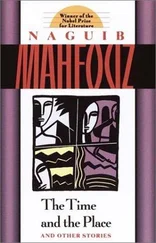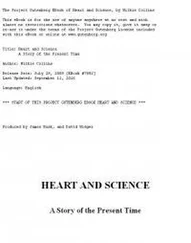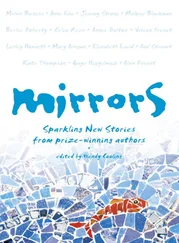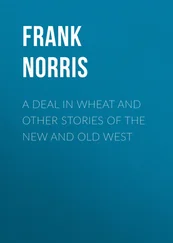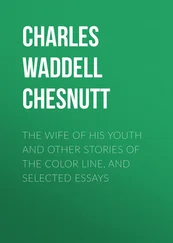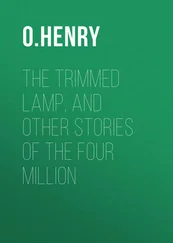“I’m very glad to hear that,” Marty says.
They walk past a sliding door into the air-conditioned dining room. Aling Merrigold gestures for them to sit. “This dinner is mostly from San Miguel, as well—the roasted chicken is, for sure. This is your Spam, and I think the bangus relleno is yours, too. Pero the cake is from Gardenia. And the chicken cordon bleu is by Universal Robina, because I’m sorry, their cheese is better than yours, you know? Anyway, let’s eat.”
She says grace, and they dig in.
Marty takes a bite of the roasted chicken. It’s delicious. He feels a swell of pride. He helped make these things. Not directly—that was the research team’s job—but he handled most of the exports and imports that provided the raw materials for their meats. After the lockout with China he had shifted grudgingly to more expensive vendors in Vietnam, only to realize that their bio-plasticine millet (BPM) adhered to flavorants more easily, and could be molded into more convincing shapes. Chicken and tuna, in particular, could be replicated using Vietnamese BPM for a cheaper unit cost, and San Miguel was quickly able to launch a new line of canned goods, labeled: More nutritious. Extra-delicious!
People still say it doesn’t beat the real thing, but Marty thinks it comes pretty damn close. They’ve finally reached an era when neither Mariah nor JR will incur a health risk from their diet; when people don’t need to fret about foodborne illnesses; when it’s conceivable, if the government gets its shit together, for people below the poverty line to have three meals a day.
“Has the Department of Health decided on a budget for its feeding program yet?” Aling Merrigold asks.
“No,” Marty says. “I hear they’re working on it.”
Aling Merrigold rolls her eyes. “They’re always working on it.” She takes a sip of Coke. “Still, I can’t pretend I’m thinking about anything except tomorrow. You haven’t seen it live, but the moment when San Isidro makes his choice and the produce becomes—you know, natural—it’s wow. Talagang wow .”
The news reporters said the same thing, when the first miracle happened during Pahiyas three years ago. No one believed the sensational coverage on TV Patrol at first, but then the owners of the winning house started selling chunks of food as proof: a bite of real corn, a handful of real green beans, a cluster of real juicy grapes. The reporters showed the old church’s statue of San Isidro in the town square, surrounded by people bursting into tears as they bit into their first unsafe food in years. It was ridiculous. Marty remembers thinking, Why is everyone so hung up on this? Why is everyone freaking out?
He remembers thinking, It can’t be a miracle, because we’ve already INVENTED the miracle .
What are you doing here, then? Something inside him asks. He recalls the twist in his gut, the saliva filling his mouth, as he watched an old woman nibble on a real banana, weeping wretchedly.
This is home , another voice that sounds more like him insists. I just wanted to see the fiesta. I wanted the kids to see .
He pauses over his next forkful. “You don’t think it’s—you know, a hoax, or something?”
“Ay naku, no, never! You’ll understand when you see it,” Aling Merrigold says. “You don’t even need to taste it. It’s the smell, the color, the everything. I mean, the mayor tried to keep it from spreading, played it up as airbrush and fake imports, but there’s no denying it. Really, how long naman can you lie without shame? Last year, I shelled out for a few pieces of camote—that’s my favorite, you know?—and when I ate it, Diyos ko, it was so good.”
“I see.” Marty licks his lips. “Well, it’ll be fun to watch.”
Aling Merrigold nods and swallows a spoonful of milkfish relleno. Marty watches her, satisfied. It doesn’t matter that the milkfish is made of the same thing as the chicken, the rice, the vegetables. They look different, taste different, and have the same high nutritional content. They’re better for everyone.
* * *
Mass the following morning is at 6:00 a.m., which causes much groaning. They manage to make it through the church doors in time for the second reading. The priest is particularly zealous, exhorting everyone to give thanks for their gathering together as one community, and for the bountiful harvest that San Isidro—“and our sponsors San Miguel Corp., Universal Robina, Golden Arches, and Monde Nissin”—have provided. The people of Lucban are restless, beaming at each other as they exchange signs of peace. Only the image of San Isidro remains calm, already primed in a float for the beauty pageant winner to carry him in later.
After mass there are a few hours left before the procession, so they decide to explore the town. Stalls selling woven buri hats, fans, handbags, and little straw birds are interspersed with old ladies on fold-out stools, hawking rice cakes and empanadas. Inez haggles over a bundle of hats. Mariah picks out keychains for her friends. JR drops the buko juice he’s slurping and it bursts on the concrete, leaving a slushy puddle that nobody minds. Inez tsk s, and Mariah wonders loudly when the procession will start. They each have a serving of pancit habhab on banana leaves.
Marty remembers not caring much about the actual Pahiyas Festival as a child. He was more interested in the preparations leading up to it. He would squat next to Mang Kikoy as the old man ground soaked rice, until it was pale and liquid as milk. Mang Kikoy would stir the wet rice, divide it into shallow buckets, then mix in the coloring: blue and yellow to make apple green, red and blue to make dark pink. Then he would dip a large kabal leaf in the mixture, as a mold for the kiping, and hang it so that the excess coloring dripped. To finish he would cook them over a charcoal grill, while Marty ate the rejected attempts and recited random facts he had learned at school.
Marty didn’t watch the kiping preparation yesterday. Something about the BPM Mang Kikoy was using instead of rice made Marty feel weird. It might have been misplaced nostalgia, and he knew that was a useless feeling.
JR, however, had watched and reported to Marty after: about how he had eaten some of the leftovers and they tasted kind of funny, kind of like nothing, but Mang Kikoy said it was made of rice so that was probably normal, right, Dad?
“Kiping has no taste,” Marty said, laughing. “I mean, rice itself has barely any flavor.”
“But Mang Kikoy said the real foods in the fiesta taste awesome, and if I can eat a fruit or veggie from the winning house tomorrow, I’ll understand what he means!”
“Oh, did he say that? Those things are really expensive. And they’ll probably make your tummy ache. Or make your teeth gray, like Mang Kikoy’s!” Marty rumpled JR’s hair, so that JR squirmed. “Don’t know if you’ll get to taste any of that, anak.”
“I will,” JR said. “I’m gonna grab some with my stretchy arms—SHEEE-OW!” He whipped his arm wildly. “And then I can tell all the kids in my class, and they’ll be jealous, because they’ve never eaten yummy real food and they never will !” He chuckled, evil and gleeful, and robotically walked away to heckle his sister.
Marty remembers the great glass houses they passed on their way to Lucban, lining the fields stretched beneath Mt. Banahaw. Piles of corn and rice, endless rows of pineapple and root crop, stewing in their meticulously engineered domes, more delicious than nature could ever make them. Simply more than God could ever make them.
* * *
The procession begins at 1:00 p.m. with the local policemen leading the marching band through the streets. The crowd surges from the town center. Those who live along the procession route peer out from windows and balconies, waving at onlookers. An ABS-CBN TV crew starts their segment. People in bright red shirts bearing the Universal Robina logo hover near the cameras, holding up signs that say Don’t Eat the Miracle Food—It’s Poison! You Could Die!
Читать дальше

